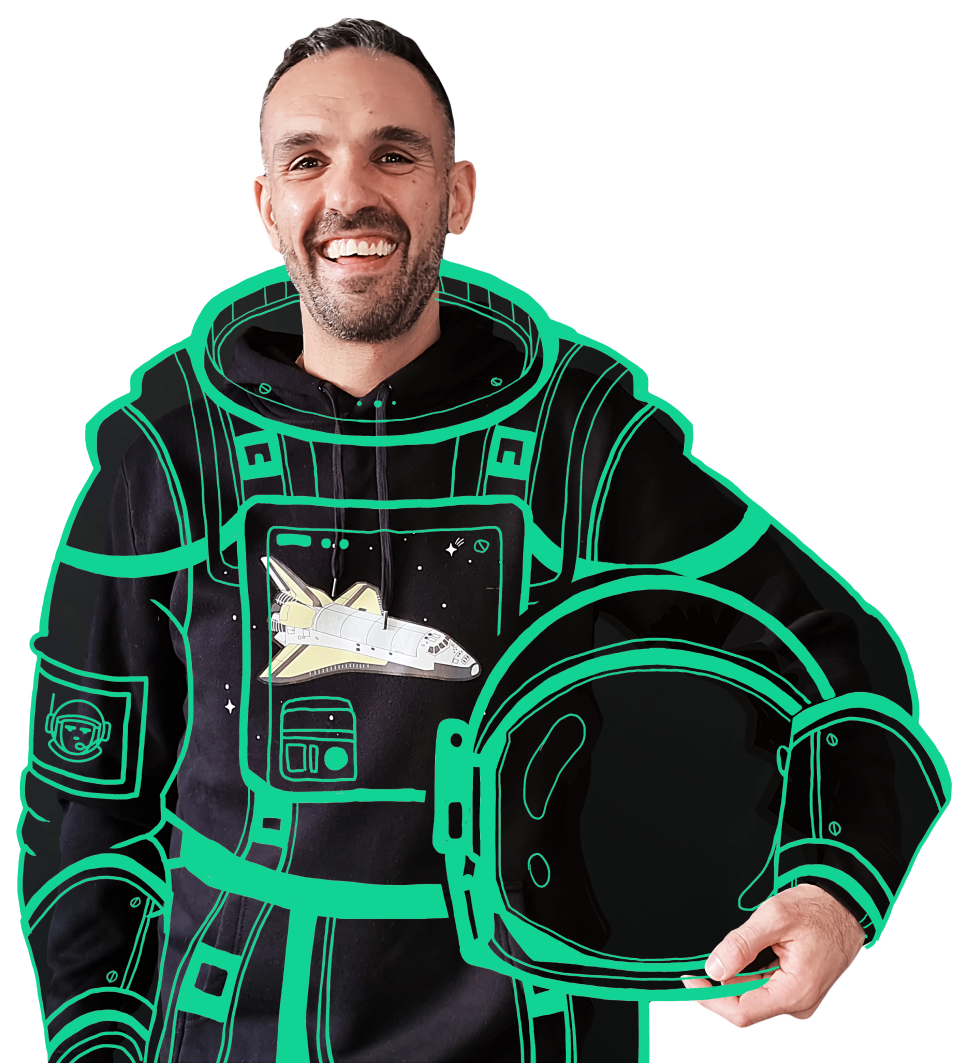Your website's "above the fold" area, the portion of your web page that is visible without scrolling, is prime real estate for capturing visitors' attention and guiding them towards conversion.
Crafting an effective above-the-fold strategy is not just about aesthetics; it's about strategically optimizing this crucial space to engage your audience from the moment they land on your site and guide them towards your desired action.
Let’s explore the importance and benefits of having an above-the-fold website strategy, and how you can build one that increases your conversions.
The Power of First Impression
"You never get a second chance to make a first impression." - Will Rogers.

Online users form an opinion about a website in 0.05 seconds, according to Taylor & Francis Online. Consequently, those initial seconds are make-or-break for determining whether your visitors stay on your website or leave to another competitor.
Studies show that a positive first impression of a website fosters trust and credibility, two vital factors in the conversion process. Whereas a negative first impression can result in users never returning or recommending your site, or having doubts about your brand's credibility.
Given that the above-the-fold content represents the first impression users encounter upon landing on your website, it's important to prioritize creating a compelling above-the-fold section.
According to Nielson Norman Group, website users spent about 57% of their page-viewing time above the fold.
Think of your website as a virtual storefront, with the above-the-fold area serving as your display window. Just as a well-designed storefront attracts passersby, an engaging above-the-fold section draws visitors deeper into your site.
Understanding Above-the-Fold
The origins of the above-the-fold
The term "above the fold" originates from the print newspaper industry, referring to the content visible on the top half of the front page when the newspaper is folded. Now its adaptation to the digital realm has brought about new dimensions and considerations.
In web design, it pertains to the portion of a webpage that's visible without scrolling down. It is prime real estate for grabbing attention and delivering your message promptly.
In the early days of the internet, screen resolutions were lower and websites were primarily accessed via desktop computers. However, with the invention of mobile devices and varying screen sizes, the definition of "above the fold" has become more fluid, requiring adaptability and responsiveness in design.

The role of scrolling behavior
While it's essential to capture users' attention above the fold, it's equally important to recognize that scrolling behavior has become a norm in modern browsing habits, especially on mobile.
Studies suggest that users are willing to scroll if they're engaged and find value in the content. Therefore, while above-the-fold content sets the initial impression, the entire webpage should be crafted with user engagement and conversion in mind.
Above-the-fold vs. below-the-fold
While the above-the-fold area grabs the most immediate attention, content below-the-fold plays a crucial role in providing additional context, elaborating on key points, addressing objections, and reinforcing trust to help guide users towards conversion.
Striking the right balance between above-the-fold impact and below-the-fold depth is essential for maximizing engagement and conversion rates.
10 Tips For Your Above-the-fold Website Strategy

- Compelling headlines: Your headline is the first thing visitors see, so make it count. Ensure your headline clearly communicates the essence of your product or service. Incorporate relevant keywords to enhance search visibility and entice clicks.
- Unique selling points (USP): Communicate to your audience your unique selling points (USP’s) and what sets your brand or product apart from competitors. Keep your messaging clear and concise and avoid clutter and unnecessary information that can overwhelm visitors.
- Visual impact: Visual elements are powerful attention-grabbers. Use high-quality images, videos, or graphics that resonate with your target audience and reinforce your brand identity. Ensure that visuals are optimized for quick loading times to prevent user frustration.
- Call to Action (CTA): Encourage visitors to take action with a prominent CTA like "Sign Up Now," "Shop the Sale," or "Learn More.” Use action-oriented language and compelling design to prompt immediate action aligned with your conversion goals.
- Navigation menu: Your navigation menu allows your users to explore your entire website within a moment, all without the need for scrolling. Consider incorporating a mega menu for a visually appealing and comprehensive navigation experience, ensuring visitors can quickly access relevant content and maximizing engagement.
- Social proof: Build trust and credibility by showcasing logos, awards, customer reviews, or social media mentions above the fold to reassure visitors of your brand's quality and reliability.
- Visual hierarchy: Guide users' attention through a well-designed visual hierarchy that directs their gaze towards the most important messages first. This hierarchy should reflect the user's journey and align with their expectations and goals. Use contrasting colors, bold typography, and strategic placement to draw focus to key messages and calls to action.
- Optimize for mobile: Ensure that your above-the-fold content loads properly and quickly across all devices, especially mobile, where a significant portion of web traffic originates.
- Loading speed: Studies indicate that even a one-second delay in page load time can result in a significant drop in conversions. Optimize images and minimize unnecessary elements to reduce load times and improve user experience, keeping visitors engaged from the moment they arrive.
- Test and iterate: Don't rely on guesswork when optimizing your above-the-fold strategy. Conduct A/B tests to compare different layouts, headlines, visuals, and CTAs. Analyze user behavior and conversion rates to continually refine and improve your approach.

Conclusion
Your website's above-the-fold area represents the biggest opportunity to make a lasting impression and drive conversions. Remember, the power of first impression extends beyond mere aesthetics - it's about building trust, credibility, and rapport with your audience.
Invest the time and effort to craft an above-the-fold strategy that not only captures attention but also delivers value and fosters meaningful connections with your visitors. In doing so, you'll lay the groundwork for long-term success and sustained growth in the competitive digital landscape.
Additionally, if you'd like personalized assistance in optimizing your above-the-fold strategy, we offer free website consultations. Our conversion rate optimization (CRO) experts will conduct an audit of your website, providing valuable insights and recommendations to enhance your online presence. We're here to help you succeed and provide genuine assistance to support your goals.
Book a Free Website Consultation
Discover quick wins for your digital strategy. 100% guaranteed.









